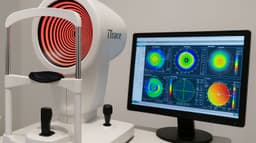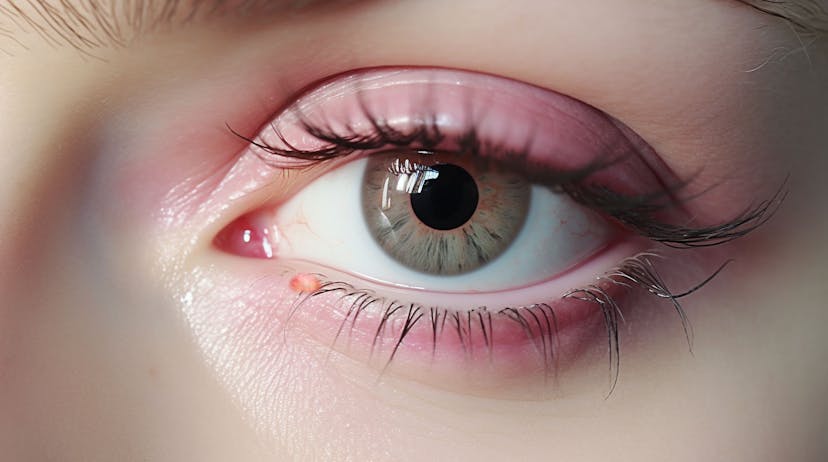
What Is Oculoplastic Surgery?
Oculoplastic surgery has evolved over the years as a specialised and dynamic field within the broader realm of ophthalmology and plastic surgery. The roots of oculoplastic surgery can be traced back to the early 20th century when pioneers in the field began addressing issues related to the eyelids and surrounding structures. One of the significant contributors to the development of oculoplastic surgery was Dr. Allan M. Braley, who, in the 1950s, established the first fellowship program in oculoplastic surgery. This marked a pivotal moment, as specialised training became more formalised, enabling surgeons to acquire specific skills in addressing the unique challenges presented by the delicate tissues around the eyes.
As the discipline matured, oculoplastic surgery expanded its scope to encompass a wide range of procedures, blending the precision of ophthalmic surgery with the principles of plastic and reconstructive surgery. Advances in surgical techniques, technology, and a deeper understanding of facial anatomy further propelled the field forward. The latter part of the 20th century saw an increasing demand for both functional and cosmetic oculoplastic procedures, reflecting the growing recognition of the impact that these surgeries could have on patients' vision, comfort, and overall well-being. Today, oculoplastic surgery continues to thrive as a specialised subspecialty, offering patients comprehensive care for conditions affecting the periorbital region while incorporating innovative approaches to enhance both form and function.
Oculofacial Or Oculoplastic Surgery
Oculoplastic surgery, also known as oculofacial or oculoplastic surgery, is a specialised field of plastic surgery that focuses on the structures around the eyes, including the eyelids, orbit (eye socket), lacrimal (tear) system, and adjacent face. Oculoplastic surgeons are trained ophthalmologists (eye surgeons) who have undergone additional fellowship training in plastic and reconstructive surgery specific to the eyes and surrounding areas.
The primary goal of oculoplastic surgery is to enhance both the functional and aesthetic aspects of the periorbital region (the area around the eyes). Conditions and procedures within the scope of common oculoplastic surgery include:
Eyelid Surgery (Blepharoplasty)
Eyelid surgery, known as blepharoplasty, is a surgical procedure designed to address various aesthetic and functional concerns related to the eyelids. Primarily performed for both cosmetic and functional reasons, blepharoplasty targets excess skin, muscle, and fat that may accumulate in the upper and lower eyelids over time. From a cosmetic standpoint, the procedure helps rejuvenate the appearance of the eyes by reducing sagging skin, minimising puffiness, and eliminating the appearance of droopy or tired-looking eyes. This not only contributes to a more youthful and alert expression but can also enhance self-confidence. Functionally, blepharoplasty can be instrumental in improving peripheral vision obstructed by heavy, overhanging eyelids, thereby addressing functional impairment. Additionally, individuals experiencing discomfort due to irritation caused by eyelid skin rubbing against the eyes may find relief through this surgery. Overall, blepharoplasty offers a transformative solution, harmonising both aesthetic and practical aspects, resulting in a more refreshed and vibrant appearance coupled with improved vision and comfort.

Ptosis Repair
Ptosis repair is a surgical procedure aimed at correcting ptosis, a condition characterised by the drooping of the upper eyelid. Ptosis can be congenital (present at birth) or acquired later in life due to factors such as ageing, trauma, or neurological issues. The primary benefit of ptosis repair is the restoration of the normal position of the upper eyelid, ensuring proper eye function and improving the patient's overall appearance. Functionally, ptosis repair can significantly enhance visual field obstruction caused by a drooping eyelid, allowing for a broader and more unobstructed range of vision. This correction not only contributes to improved eye function but also alleviates symptoms such as eye strain and fatigue.
Cosmetically, ptosis repair can have a transformative impact on a person's facial aesthetics, eliminating the tired or asymmetrical look associated with drooping eyelids. By lifting and repositioning the eyelid to a more natural and youthful height, the procedure helps rejuvenate the entire eye area, creating a more alert and refreshed appearance. The benefits of ptosis repair extend beyond the aesthetic realm, positively impacting the patient's quality of life by addressing both functional and cosmetic concerns associated with ptosis.
Entropion and Ectropion Repair
Entropion and ectropion repair are surgical procedures aimed at correcting abnormalities in the positioning of the eyelids—entropion involves the inward turning of the eyelid, while ectropion involves the outward turning. Both conditions can cause discomfort, irritation, and compromise the ocular surface, making surgical intervention crucial for alleviating symptoms and preventing potential complications.
Entropion repair involves repositioning the eyelid to prevent it from turning inward. This correction is essential for preventing the eyelashes and skin from rubbing against the cornea, reducing the risk of corneal abrasions, infections, and discomfort. Functionally, the surgery restores the natural alignment of the eyelid, contributing to improved eye comfort and protection.
On the other hand, ectropion repair addresses the eyelid's outward turning, which can lead to inadequate coverage of the eye and exposure of the conjunctiva. Ectropion repair typically involves tightening and repositioning the eyelid to ensure proper alignment, thus preventing issues like dryness, redness, and susceptibility to infections. The surgery not only enhances ocular comfort but also helps maintain the health of the eye surface.
Both entropion and ectropion repair surgeries offer functional improvements, ensuring the proper functioning of the eyelids and reducing the risk of complications. Cosmetically, these procedures contribute to a more natural and harmonious appearance of the eyes, relieving patients from the discomfort and aesthetic concerns associated with eyelid malpositioning.

The overarching goal of orbital surgery is to restore and maintain the optimal function of the eye within the orbital cavity while addressing underlying health issues. These procedures are typically intricate and require collaboration between oculoplastic surgeons, neurosurgeons, and otolaryngologists to ensure comprehensive care for patients with orbital conditions. Orbital surgery not only addresses immediate health concerns but also contributes to the long-term well-being and quality of life of individuals facing complex orbital issues.
Lacrimal (Tear Duct) Surgery
Lacrimal (tear duct) surgery is a specialised area within oculoplastic surgery that involves procedures related to the tear drainage system. The lacrimal system plays a crucial role in maintaining eye health by draining tears from the surface of the eye into the nasal cavity. Conditions affecting the tear ducts, such as blockages or abnormalities, may require surgical intervention to restore proper tear drainage and prevent issues such as excessive tearing or recurrent infections.
One significant benefit of lacrimal surgery is the resolution of tear duct obstructions. Blockages in the tear ducts can lead to tearing, blurred vision, and an increased risk of eye infections. Lacrimal surgery aims to open or bypass these blockages, allowing tears to flow freely and maintain the eye's natural moisture balance. By addressing these issues, the surgery can alleviate discomfort and enhance visual clarity.
Another common lacrimal procedure is dacryocystorhinostomy (DCR), which involves creating a new passage for tears to bypass an obstructed or damaged tear duct. This is often performed when the blockage occurs at the nasolacrimal duct, the portion of the tear drainage system that connects the eye to the nasal cavity. DCR surgery helps restore the normal flow of tears and prevents the accumulation of tears in the eye, reducing the risk of infections and improving overall eye comfort.
Moreover, lacrimal surgery serves to restore the normal function of the tear drainage system, addressing conditions that can impact both visual comfort and ocular health. By resolving tear duct obstructions, these procedures contribute to the prevention of recurrent infections, alleviation of tearing, and improvement in the overall well-being of individuals experiencing lacrimal system abnormalities.
Eyebrow and Forehead Lifts
Eyebrow and forehead lifts are cosmetic surgical procedures designed to rejuvenate the upper face by addressing sagging skin, wrinkles, and other signs of ageing. These procedures, often performed together, provide both aesthetic enhancement and a more youthful appearance.
One primary benefit of eyebrow and forehead lifts is the reduction of forehead wrinkles and horizontal lines. As individuals age, the skin loses elasticity, and muscle activity can lead to the development of forehead creases. The surgery involves lifting the eyebrows and tightening the forehead skin, smoothing out wrinkles and creating a more youthful and refreshed look.
The repositioning of sagging eyebrows is another key advantage of these procedures. As eyebrows descend with age, they can contribute to a tired or hooded appearance. Lifting the eyebrows restores a more open and alert look to the eyes, enhancing overall facial harmony. This aesthetic improvement not only contributes to a more youthful appearance but can also positively impact self-confidence.

Eyebrow and forehead lifts can be particularly beneficial for individuals with a heavy or drooping brow that may give the impression of fatigue or unhappiness. The surgery provides a subtle yet impactful lift to the upper face, creating a more vibrant and rested look. Additionally, these procedures are often customised to the individual's unique facial features, ensuring natural-looking results.
In summary, eyebrow and forehead lifts offer aesthetic benefits by addressing the effects of ageing on the upper face. By lifting and tightening the skin, these surgeries help diminish wrinkles, elevate sagging eyebrows, and create a more youthful and harmonious facial contour. The psychological impact of these procedures can be significant, as individuals often experience increased self-esteem and satisfaction with their appearance following eyebrow and forehead lifts.
Cosmetic Botox and Dermal Fillers
Cosmetic Botox and dermal fillers are nonsurgical aesthetic treatments designed to reduce the appearance of facial wrinkles, restore facial volume, and enhance overall facial contours. These minimally invasive procedures offer numerous benefits for individuals seeking to rejuvenate their appearance without undergoing surgery.
One primary advantage of cosmetic Botox injections is the temporary relaxation of muscles responsible for dynamic wrinkles, such as frown lines, crow's feet, and forehead lines. By inhibiting muscle contractions, Botox smoothens these wrinkles and provides a more youthful and refreshed look. The treatment is quick, with minimal discomfort and downtime, making it a popular choice for those seeking a non-invasive solution for facial rejuvenation.

Both Botox and dermal fillers offer the benefit of immediate results with minimal recovery time. The treatments are customisable, allowing for a tailored approach to address individual concerns and achieve natural-looking outcomes. Additionally, these procedures are often performed in an outpatient setting, making them convenient for individuals with busy schedules.
Cosmetic Botox and dermal fillers provide a non-permanent yet effective solution for individuals looking to enhance their facial aesthetics without the commitment or downtime associated with surgical interventions. The versatility and quick results make these treatments popular choices for those seeking subtle but impactful improvements in their appearance.
Surgical Skill
Oculoplastic surgery requires a combination of surgical skills and a deep understanding of the delicate structures around the eyes. Patients may seek oculoplastic surgery for functional reasons, such as correcting vision problems, or for cosmetic reasons, to improve the appearance of the eyes and surrounding areas. As with any surgical procedure, it is important for individuals considering oculoplastic surgery to consult with a qualified and experienced oculoplastic surgeon to discuss their specific needs and expectations.
Elevate Your Aesthetic Journey With My-iClinic!
Are you ready to rediscover a more vibrant and youthful version of yourself? Look no further than My-iClinic, where innovation meets personalised care. Our expert team is dedicated to enhancing your natural beauty through a range of cutting-edge services, including Cosmetic Botox, Dermal Fillers, Eyebrow and Forehead Lifts, and more!
Experience Timeless Beauty: Cosmetic Botox and Dermal Fillers
Say goodbye to fine lines and embrace a rejuvenated, smoother complexion with our Cosmetic Botox treatments. Achieve subtle, natural-looking results that turn back the hands of time. Restore lost volume and contour your features with precision using our dermal filler solutions, tailored to meet your unique aesthetic goals.
Lift and Revitalise: Eyebrow and Forehead Lifts
Transform your appearance with our Eyebrow and Forehead Lifts, designed to lift sagging skin and erase the telltale signs of ageing. Rediscover a more youthful, refreshed look that reflects the vibrant spirit within you. Our skilled professionals are committed to delivering results that boost both your confidence and your natural beauty.
Why Choose My-iClinic?
- Expertise: Oculoplastic fellowship-trained specialist with a wealth of experience in oculoplastic and cosmetic procedures.
- Personalised Approach: Tailored treatments to suit your unique facial anatomy and aesthetic preferences.
- Innovation: Stay at the forefront of beauty with the latest advancements in nonsurgical facial rejuvenation.
Schedule Your Consultation Today!
Embark on your journey to timeless beauty by scheduling a consultation with My-iClinic. Uncover the possibilities that await you and let our team guide you toward a more radiant, confident you. Your transformation begins here!
Find out more by Speaking to our team









